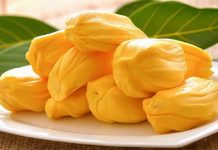Family: Solanaceae
Synonym: Solanum lycopersicum L.
Bengali/Vernacular name: Tomato, Tok begun,Bilatibegun (Bengali); Gurbegun(Chittagong), Khatta baioon (Noakhali).
Tribal name: Kharang-shang-chae (Chak), Bawk-bawn-thur (Lushai), Surcha-min-tao (Murang), Andakthur (Pangkhoa), Kha-rey-shying-sthei (Rakhaing).
English name:Tomato.
Description of the plant: A viscidly pubescent, branched, annual herb, up to 1 m tall. Stems weak and trailing.Leaves arranged spirally, up to 30 cm long, imparipinnate, lyrate or sometimes only slightly lobed, ovate, pinnae unequal, irregularly toothed. Flowers small, 1.5-1.7 cm across, yellow, on lax, few-flowered, peduncled cymes.Fruits juicy, variable in size, 2-10 cm across, shape (round, oblong or lobed) and colour (deep red, brick red or yellowish).
Plant parts used: Fruit, root.
Herbal uses:A paste made with the roots of the plant is applied to the affected parts of the body once a day until the rheumatism is cured.
Decoction prepared from roots of the plant is used for gargling twice a day for five days to treat toothache.
Juice extracted from the fruits of the plant is used as a remedy for asthma and bronchitis.
Sliced fruits are a quick and easy first aid treatment for burns, scalds, and sunburn.
Fruit pulp is used to treat dyspepsia, biliousness.
Paste prepared from the roots of the plant is applied to the forehead twice a day for two days to treat headache.
Distribution: It is cultivated throughout the country.
Is this plant misidentified? If yes, please tell us….















… [Trackback]
[…] Information to that Topic: natureinfo.com.bd/lycopersicon-esculentum-mill/ […]